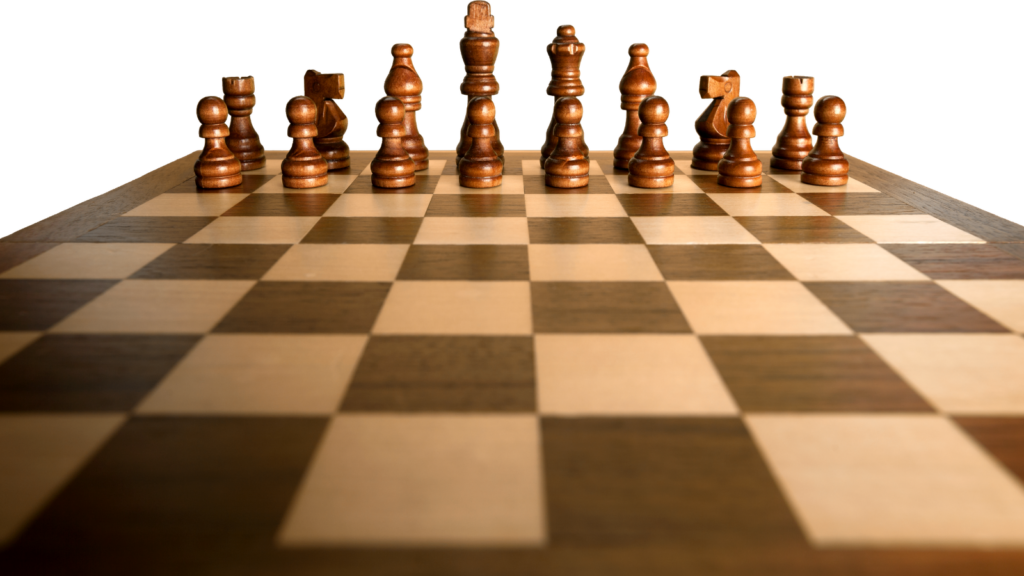The game of chess, with its intricate strategies and complex rules, has been enchanting players for centuries. In this intellectual battlefield, each piece has its unique role, but is there one that holds the key to victory?
This article dives into the fascinating world of chess, exploring the strategic importance of each piece. We’ll uncover which piece, in the hands of a skilled player, can turn the tide of the game and secure a win.
Most Strategic Chess Piece
Mobility and Value

Chess pieces derive strategic importance from two primary factors: mobility and value. In the context of chess, mobility refers to the number of squares that a piece can reach, while value refers to the relative worth of a piece in comparison to the others.
For instance, take the Queen, with its wide breadth of movement, that it can cover the entire board, and it’s valued at nine pawns, making it the most valuable piece excluding the King. However, Knights, valued at three pawns, become extremely mobile in cluttered game situations, making them indispensable for forking and other complex strategies.
Influence on the Game Board
Another aspect determining a piece’s strategic capacity lies in its influence on the game board. A piece’s ability to control and restrict the opponent’s moves significantly contributes to its strategic importance. For example, Rooks excel at asserting horizontal and vertical dominance, and can control up to half of the board from a central position. Conversely, Bishops, limited to their initial square color, can nevertheless skilfully slice through the board diagonally, limiting opponent’s options. This potent blend of piece mobility, value, and influence helps define the strategic essence of the chess game, shaping battles of tactical prowess and insightful foresight.
The Queen: The Most Strategic Chess Piece
The Queen, often heralded as the most potent and most strategic chess piece, holds a paramount position on the chessboard, showcasing the game’s subtleties and strategic depth.
Reasons Behind the Dominance

The dominance of the Queen in chess emanates from its formidable abilities. First off, the Queen possesses unparalleled mobility among all pieces, boasting the capacity to maneuver both diagonally and straight, across any number of unfettered squares. This versatility facilitates optimum board coverage, putting players in a position of power.
Secondly, the Queen’s high value, often assigned a score of nine, demarcates its importance. This numeric representation, akin to its physical dominance on the board, enforces the notion of the Queen being the most powerful unit, underlining the need for its strategic deployment.
Impactful Queen Moves in Chess History

Throughout chess history, several instances testify to the strategic significance of the Queen. For example, in the legendary game of Paul Morphy at the Italian Opera in 1858, Morphy’s strategic Queen movements led to a swift victory and an eventual masterpiece. In this game, Morphy used his Queen ostensibly as bait, only to reveal its tactical value in ensuring mate, illustrating the Queen’s potential to impact game outcomes drastically.
Similarly, another testimony to the Queen’s decisive influence emerged during the Fischer vs. Byrne ‘Game of the Century’ in 1956. At one point, Bobby Fischer made a seemingly counterintuitive decision to sacrifice his Queen, a move that astounded spectators and Byrne alike. Nonetheless, this sacrifice served as a strategic ruse that allowed Fischer to secure an unforgettable win, reemphasizing the critical value of deliberate Queen positioning and sacrifices for advantageous gameplay.
Fascinating World of Chess
Every chess piece holds its unique strategic value. It’s the Queen that often stands out due to her mobility and versatility. She’s a force to reckon with, as seen in games by chess legends. But let’s not forget the unsung heroes – the King, Bishops, Knights, Pawns, and Rooks. Their potential can be maximized with the right strategy, as demonstrated by Fischer, Polgar, Carlsen, Kasparov, and Karpov.

